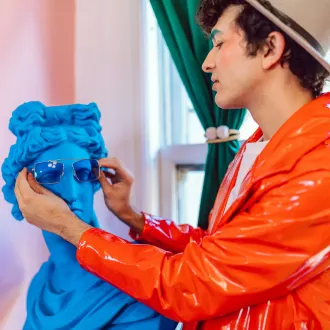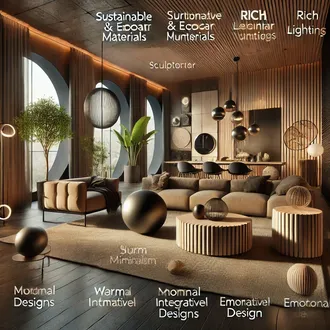Transcription Decoration elements (2)
In this presentation we will continue to learn about other elements of decoration: light, colors, texture and wallpaper. Page break
Light
- Light is a key element in the decoration of any space; without it, the other elements would not be able to shine fully, nor would they be able to show off their different shades.
- Natural light allows us to perceive a changing interior space throughout the day, and in the different seasons of the year, an element to take into account especially for the selection of the colors of the walls and ceilings, the distribution of furniture and the use of curtains.
- Artificial light allows general or specific illumination of a room, leaving some points in darkness and highlighting others or creating an infinite number of shades and colors that transform all or part of the room as we wish.
When considering the lighting of a room, we must take into account first of all the activities that will be developed in it, for example: in a sewing room, a bright environment should prevail, allowing to see clearly the work, and also to clearly observe other objects or pictures located at a greater distance to refresh the view periodically. However, a room could have a softer tone, certain dark tones would make it a much more versatile space.
Color
Color is another key element in interior design; it can be used to alter the perception of room size, define the unity of the decorative scheme and influence people's mood and state of mind.
When assessing the color required for a room, think about the activities that will take place in the room and consider the effects of natural and artificial lighting throughout the day and night. Also take into account the size of the space, consider that a small space may look larger if light colors are used, while a large space may appear more intimate and warm if darker tones are used.
Always keep in mind individual color preferences, remember that the use of certain colors may be pleasing to some people and disturbing to others. For example: although brown and reddish tones are said to stimulate appetite, we could not use these colors in all kitchens and dining rooms as not all customers would accept them.
Texture
Texture refers to the way the surfaces of finished objects appear (smooth, rough, rough, rough, or grainy). This element, sometimes overlooked by decorators, can create accents and contrasts that help express delicacy, tenderness, roughness or naturalness. Smooth textures produce a static visual sensation, while rough texture produces a subtle sense of depth or movement.
When we can appreciate a texture through touch (by touching a rug, a carpet, etc.), we say that it is a tactile or real texture, while when we can appreciate only its representation we refer to visual textures or graphic textures. There are many creative ways to combine different types of textures in a room (placing rugs, paintings, carpets, furniture, etc.), however, the use of many objects with different textures is not recommended.
Wallpaper
Nowadays, wallpaper is still used in decoration, although not as it was done in the 60's of the last century, when all the walls of the house were covered. Today this element is generally used on one or two walls of a room, mainly to differentiate certain rooms of an interior space. For example: wallpaper could help to frame the dining area, in a space that fulfills the functions of living room and dining room.
Wallpaper can also be used to mask aging or small defects in walls, to increase the feeling of height or width of a room, or to liven up a children's room with appropriate colors and patterns.
When choosing a wallpaper you should keep in mind that its function in most cases is complementary, so very striking wallpapers could interfere with the appreciation of the furniture or other decorative elements of the room.
elements 2




